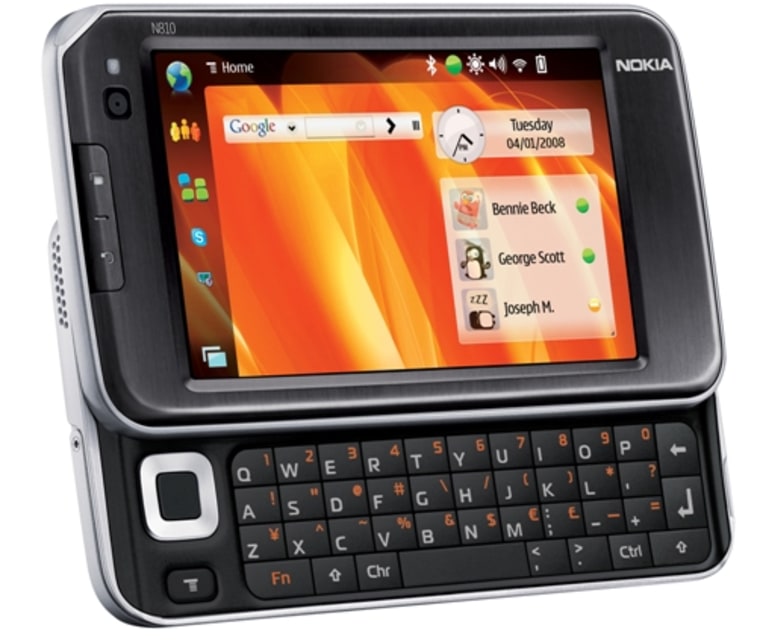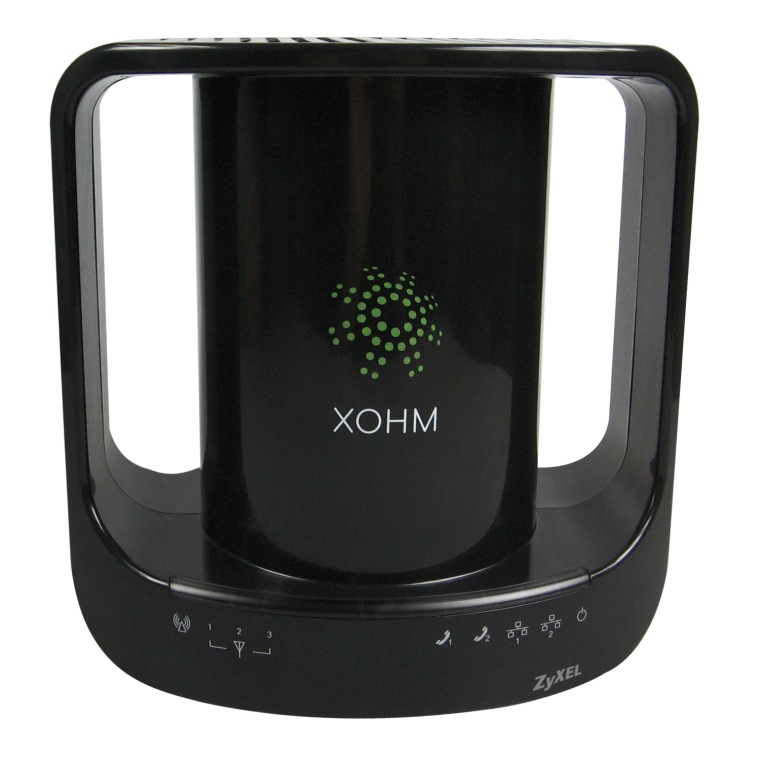The modem looks more like a coffeemaker or other home appliance than a means of quickly moving large data files, such as movies, to your computer.
And perhaps its design is intentional. Certainly, Sprint, which launched its WiMax broadband wireless network last week, hopes the odd-looking device will become as pervasive as coffeemakers in homes and offices around the country.
“If you like Wi-Fi, you’re going to love WiMax. It’s a hot spot the size of a city,” said John Polivka of Sprint. Right now, that city is only Baltimore, where Sprint built its first broadband wireless network.
Sprint says the next two cities “closest to commercial readiness” are Chicago and Washington D.C.
“We are also developing networks in Boston, Providence, Philadelphia, Dallas and Fort Worth,” said Polivka, although no time line has been announced.
WiMax has download speeds of between 2 and 4 megabits per second, and upload speeds of between 1 and 3 megabits per second.
But it’s not so much WiMax’s speed that’s of interest.
WiMax, considered a 4G, or fourth-generation, wireless network, is “data-centric,” providing a bigger “pipe” that can handle large files such as teleconferencing, video chat and movie downloads — “all those large files that people have difficulty trying to access across regular networks that aren’t built for data,” Polivka said.
That includes 3G, or third-generation, networks, he said, which are just starting to take hold in the United States and are exemplified by Apple’s iPhone 3G, and wireless broadband PC cards sold by Sprint, AT&T and Verizon Wireless.
“The iPhone was wonderful in that it made people aware of mobile multimedia,” Polivka said. “But if you think about the issues some people have had with connectivity, that’s the problem we’re solving with WiMax. The (3G) networks were never built for the applications that are now being asked of them.”
Other wireless carriers would disagree, citing improvements to 3G still to come.
'Fatter pipe in a mobile environment'
With the speed and capacity of WiMax, “what it means to consumers is a fatter pipe in a mobile environment, equivalent to DSL and cable modem speeds that they see now,” said William Ho, Current Analysis research director for wireless services.
Baltimore was selected as the first place for WiMax because “it’s a very typical U.S. city in that it represents certain wireless challenges, as well as for its demographics, with working professionals, and folks who are using the Internet at home and on the go,” Polivka said.
The “wireless challenges” include the topology of the city’s geography — “not flat,” he said, as well as being a “mix of brick and steel and wood structures, plus waterfront — all which can play havoc with radio frequency signal management.”

A WiMax signal has a range of about six miles, in contrast to Wi-Fi, which covers about 150 feet indoors, and 300 feet outdoors.
“And, if you’ve ever tried to use Wi-Fi when everyone else is logged onto it, you know how painful it can be,” said Polivka, referring to connection speeds that can slow to a crawl. That is not an issue with WiMax.
WiMax laptops released
In conjunction with the launch of WiMax in Baltimore, laptop manufacturers Lenovo, Toshiba, Acer and Asus released Intel-based laptops that are both Wi-Fi and WiMax-enabled, even though the market for WiMax laptops is limited to Baltimore, “an island right now,” said Ho.
Sean Maloney, Intel executive vice president, in a press release described WiMax as a “game-changing and disruptive technology for a world that is rapidly shifting to an unwired, always connected Internet.”
Nokia, also a backer of WiMax, has introduced its N810 Internet Tablet WiMAX Edition, which costs around $450.
“Imagine if a parent has that Nokia tablet, and they have programs on the home digital video recorder,” said Ho. “They’d be able to use WiMax as the way to get that content onto the tablet. Then, at their kids’ soccer or baseball game, if dad is bored, he can watch Monday Night Football in concurrence with paying attention to his kids’ game.”
Using WiMax, “you can open up several movies playing simultaneously on your laptop, instead of just one,” said Polivka. “You can be on a video conference, staring at blueprints, and exchanging that data back and forth in real time; the connection is that powerful. It’s a more muscular network.”
In addition to Intel and Nokia, Google, Samsung, Motorola and three cable companies — Comcast, Time Warner and Bright House Networks — are among the companies behind the WiMax push.
A different pricing model
Sprint is making it relatively painless to use its WiMax service, called Xohm. There are no sales people to deal with and no long-term contracts.
“This is an Internet model, not the telecom model,” said Polivka.
Launch pricing is $25 a month for home Internet service and $30 a month for “on-the-go” service, using either a WiMax PC card or USB dongle. The company is also offering a $50-a-month “Pick 2 for Life,” option for those who want to have both a WiMax modem and card.
The only upfront costs are for the devices. The coffeemaker-like modem, made by ZyXEL, is $79.99. The ExpressCard, made by Samsung, is $59.99. A USB dongle is coming, but is not out yet. (The Xohm modem works with Macs, but the ExpressCard does not yet.)
“We’re trying to make Internet access available and affordable in places other than the home and office,” Polivka said. “In short, Sprint is thinking beyond the cell phone.”
Initial users of the service give it a thumbs up.
“So far we love Xohm. The file transfer speeds are far superior to 3G,” wrote Todd Haselton in a blog for Laptop magazine.
Information Week writer J.Nicholas Hoover, who lives in Baltimore, wrote that, “So far, service has been pretty good using the home modem … According to Speedtest.net, I’m getting (a) 3.4 megabits per second download, and 1.2Mbps upload,” which compares favorably with his cable Internet connection.
He also used the WiMax card on his laptop to watch “The Simpsons” in the car while his wife drove. That experience was not quite as smooth, he wrote, with the connection sometimes getting dropped.
Competing technology
WiMax, which stands for “Worldwide Interoperability for Microwave Access,” is one type of 4G technology. Competitors AT&T and Verizon Wireless are backing a different technology called Long Term Evolution, which is at least two years from reality.
“There’s a several-years advantage with WiMax, because it’s here now,” said Polivka.
Not everyone sees it that way. Analysys Mason, a London-based telecommunications research firm, says 3G technologies will continue to dominate until the year 2015, and that Long Term Evolution will be the victor over WiMax by that year.
“Abroad, there is some wide movement, particularly in Europe, to adopt LTE,” said Ho of Current Analysis. Still, he said, “Sprint has a good chance” at succeeding with WiMax in the United States and other developing countries.
Clearwire deal is key
A major portion of Xohm’s success in the United States will hinge on whether Sprint can complete its agreement with Clearwire, a key player in the WiMax arena based in Kirkland, Wash., and founded by wireless pioneer Craig McCaw.
That agreement is being reviewed at the federal regulatory level. If approved, the two companies would join forces in a new company that would use the Clearwire name. The goal would be a WiMax network that could reach up to 140 million people in the United States by the end of 2010.
“When competitors come in four, five, six years from now using a technology for Long Term Evolution, WiMax will have laid the groundwork, priming the pump for more consumer adoption,” said Ho.
“Because by that time, everyone will be saying, ‘Hey, I have a lot of opportunities to buy this big, fat, wireless pipe.’ Obviously it’s in Sprint’s interest to bring this to market, because they’re building the buzz, and people will want it.”
